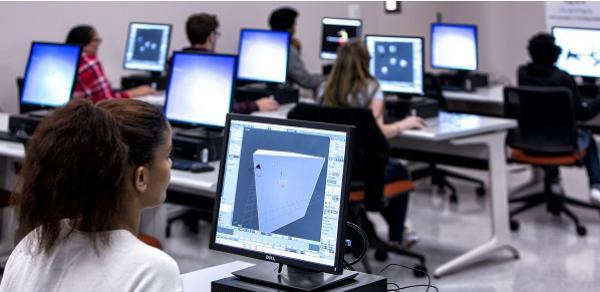Additional Navigation
Close
Additional Accomplishments
2M and St. George
OITS continues to support the Smart Classrooms and computer labs located at St. George and 2M, which like other instructional spaces, are equipped with the appropriate technology and software needed for classes.
Website and Applications
- With the implementation of the new federal ADA Level “AA” requirement, OITS had a lot of modifications needed to meet these new regulations. We remediated over 1,700 PDFs on the site as well as over 60 color contrast issues and multiple tabbing navigation issues on the homepage. We have one more phase of remediation that involves navigation levels which we hope to begin in the fall.
- We have developed several new sites and applications:
- FERPA Online Tutorial application
- Adult Learning Center site and online registration system
- With the split of the Engineering Science and Physics department, OITS developed two new department sites.
Website Training:
- Faculty are able to update their own profiles. We have taken the “train-the-trainer” approach by training a representative from each academic division to teach/assist faculty in updating their profiles.
- Many departments are able to update their web pages. This summer we did our first training session for academic divisions and various administrative departments to update their own website pages. OITS trained over 30 individuals from various departments. We are planning a second training session in the fall.

High Performance Computing Center (HPCC)
- The HPCC continues to provide support for faculty research as well as provide upgrades and reconfigurations to systems in order to improve the utilization and better serve the CUNY research community. Accomplished during the summer 2018 several upgrades to all of the production files systems were performed as well as the upgrade of the whole stack of system software for the main production server. In addition, a different control and management software was installed to allow precise analytics, implementation of fair share policies, software driven job placement, and a single point job submission.
- HPCC also developed and implemented a database (with a web interface) for reporting those publications, where faculty leveraged HPCC facilities for their research. In addition, the HPCC WIKI was reconfigured in order to access information easier. Finally, an automatic account creation system was developed with a user friendly web interface. Finally, a specialized student sever was configured as well as the reconfiguration of existing servers to expand the number of CPU cores available for users. The reconfiguration of existing storage was also completed in order to provide more storage for research projects.
- HPCC continues to make strides on system improvements with the goal of centralizing the management of submitting jobs as well as working closely with the HPCC Steering committee on developing sustainability models. Finally, HPCC worked closely with research faculty on writing grant proposals, specifically for a large scale big data visualization wall.

